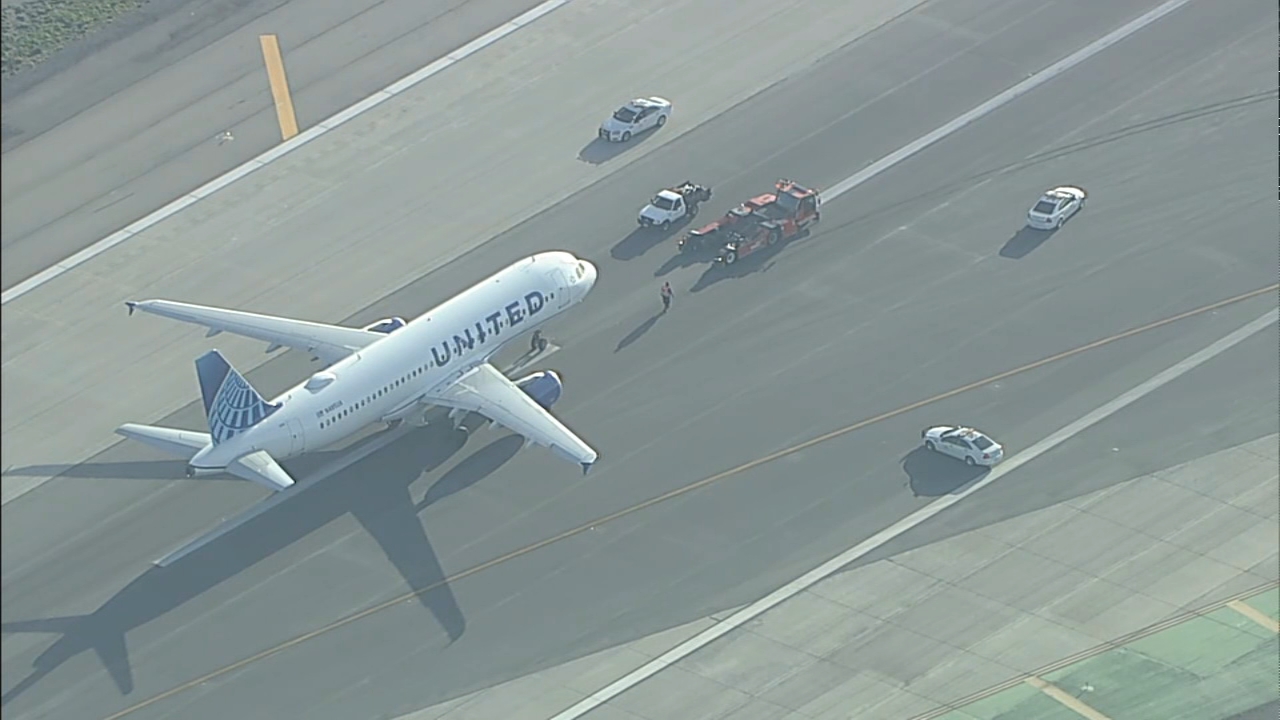
Emergency Landing Forces United Airlines Flight Off Original Route
In the world of modern aviation, safety is always the top priority. Despite advanced technology, skilled pilots, and strict protocols, unexpected situations can still arise. That’s exactly what happened recently when a United Airlines flight made an emergency landing, diverting from its original route. The incident quickly gained attention on news platforms and social media, with many passengers and aviation experts trying to understand what went wrong and how the airline handled the emergency.
In this comprehensive article, we take a deep dive into the United Airlines flight emergency landing, covering every key detail — from the cause of the diversion and the in-flight response to how United Airlines manages such situations. If you’re searching for a factual, SEO-optimized, and human-written resource on this topic, you’ve come to the right place.
Overview: What Happened During the Flight?
The incident involved a United Airlines flight originally scheduled to fly from Denver International Airport (DEN) to Boston Logan International Airport (BOS). Roughly halfway through the journey, the flight crew identified an issue with one of the aircraft’s systems — early reports indicated a potential hydraulic system alert, prompting the captain to initiate an emergency diversion.
The flight was safely rerouted to Chicago O’Hare International Airport (ORD), where it made a controlled emergency landing. Passengers were briefed mid-air, and the flight crew followed all emergency protocols while maintaining communication with air traffic control and United’s operational center.
The airline confirmed that no injuries were reported, and the aircraft landed without further complications.
What Is an Emergency Landing?
An emergency landing is a procedure where a flight lands at the nearest suitable airport due to an unplanned event that could compromise safety. These events can range from mechanical malfunctions and medical emergencies to sudden weather issues or external threats.
In the case of the United Airlines flight emergency landing, early indications point to a technical fault, possibly linked to the plane’s hydraulic system. However, airlines often take a cautious approach, opting to land immediately if there is any perceived threat to safety.
Types of emergency landings include:
- Precautionary Landing: Done out of caution when there’s no immediate danger.
- Forced Landing: Performed when an aircraft can no longer maintain controlled flight.
- Ditching: A rare emergency landing on water.
United’s crew opted for a precautionary emergency landing, adhering strictly to aviation safety protocols.
United Airlines’ Response Protocol
When a United Airlines flight emergency landing is initiated, there are clear operational steps in place:
- Immediate Crew Communication: The cockpit crew evaluates the issue, runs diagnostic checklists, and informs the flight attendants.
- Contacting Air Traffic Control (ATC): The captain requests priority landing and communicates the nature of the emergency.
- Passenger Communication: Flight attendants brief passengers calmly, ensuring seat belts are fastened and any in-flight services are suspended.
- Ground Support Mobilization: United’s operations team at the diversion airport coordinates with emergency services and ground crews.
- Post-Landing Checks: Once the plane is safely on the ground, technicians assess the aircraft while passengers are rebooked or accommodated.
United Airlines, like other major carriers, trains its crew thoroughly for such scenarios and executes emergency plans with military-level precision.
Passenger Experience During the Incident
According to passenger reports on social media, the experience was understandably tense but well-managed. The cabin crew remained composed and updated everyone throughout the process. As the aircraft prepared for descent, oxygen masks were not deployed, indicating the emergency was not related to cabin pressure loss.
Some passengers described the descent as smoother than expected, praising the professionalism of both pilots and flight attendants. Upon landing, the aircraft was met by fire trucks and emergency responders — a standard practice during emergency landings, even if no injuries are present.
Aircraft Involved: Specifications and Maintenance
The aircraft involved in the United Airlines flight emergency landing was reportedly a Boeing 737-900ER, a widely used model in United’s domestic fleet. This aircraft is known for its fuel efficiency and range, capable of safely flying over 3,000 miles.
United Airlines performs routine maintenance checks on all aircraft in accordance with FAA regulations. The airline has not released the exact cause of the issue yet, but a full investigation is standard procedure. It’s expected that a preliminary maintenance report will be available in the coming weeks, determining whether the alert was a false alarm or a sign of deeper system issues.
How Common Are Emergency Landings?
Despite the headlines they generate, emergency landings are relatively rare in commercial aviation. Statistically, fewer than 1 in 10,000 commercial flights experience an in-flight emergency requiring diversion or immediate landing. Modern aircraft are designed with redundant systems and real-time diagnostics, giving pilots more tools than ever to avoid critical situations.
The majority of these landings end safely, with no injuries and minimal disruption to passengers. This incident with United Airlines reinforces how airlines are prepared to act swiftly when passenger safety is on the line.
Media Coverage and Social Media Reactions
News of the United Airlines flight emergency landing spread quickly online, especially on platforms like X (formerly Twitter), Reddit, and Facebook. Passengers posted real-time updates, images of emergency vehicles waiting at the runway, and appreciation for the crew’s quick thinking.
Aviation enthusiasts also weighed in, analyzing flight paths from tracking tools like FlightRadar24, noting the aircraft’s change in altitude and direction once the emergency was declared. Hashtags like #UnitedAirlines and #EmergencyLanding trended for several hours post-incident.
Media coverage emphasized the calm response by the crew and the safe outcome, helping reinforce public trust in airline safety systems.
Lessons from the Incident
The United Airlines flight emergency landing offers several takeaways for both passengers and the aviation industry:
- For Travellers: Always pay attention to safety briefings and keep seat belts fastened whenever seated.
- For Airlines: Continued investment in crew training and aircraft diagnostics is essential.
- For Regulators: Incidents like this reinforce the importance of strong safety audits and transparent post-incident reporting.
Ultimately, this event is a testament to how modern aviation prioritizes safety and how trained professionals can navigate unexpected situations successfully.
Conclusion
Emergency landings are a rare but necessary part of air travel safety. The recent United Airlines flight emergency landing highlights the airline industry’s commitment to proactive decision-making, passenger protection, and clear communication. Thanks to quick thinking by the flight crew and efficient coordination with ground support, all passengers arrived safely and without harm.
While emergencies are never welcome, the calm and controlled handling of this event by United Airlines should offer reassurance to anyone who travels by air. In the face of unexpected challenges, preparation, experience, and teamwork truly make all the difference.
FAQs
1. Why did the United Airlines flight make an emergency landing?
A technical alert prompted the crew to divert for safety, likely involving the aircraft’s hydraulic system.
2. Were there any injuries during the emergency landing?
No injuries were reported, and the plane landed safely at Chicago O’Hare.
3. What type of aircraft was involved in the incident?
The emergency landing involved a Boeing 737-900ER from United’s domestic fleet.
4. How did passengers react during the flight emergency?
Passengers stayed calm; many praised the crew for professionalism and timely updates.
5. Is it common for United Airlines flights to make emergency landings?
No, emergency landings are rare and handled with strict safety protocols in place.
